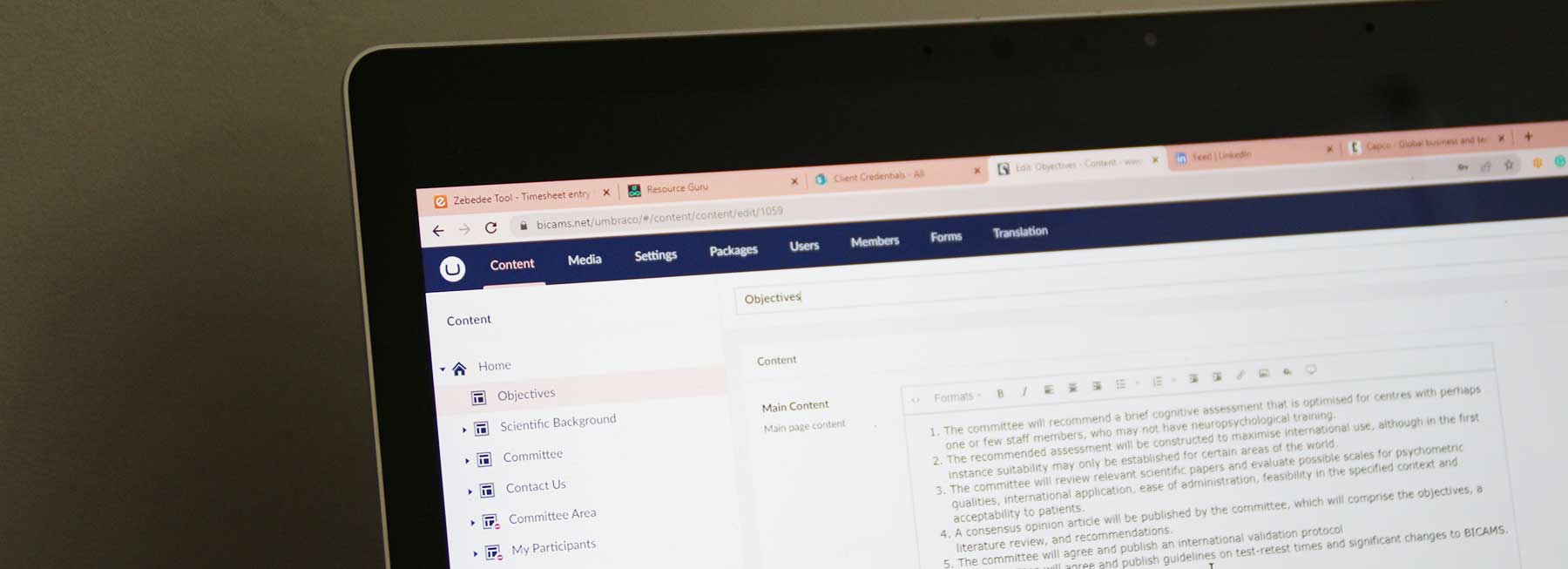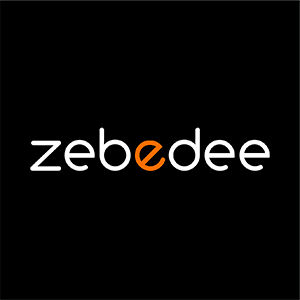How to choose the right content management system (CMS) is an essential key to the success of your website and therefore your business.
Back in the early days of the World Wide Web, an essential reference book was the “Content Management Bible” by Bob Boiko (2001) which explained everything involved in managing content for electronic and print publications.
Web design and development operates on a more interactive level now, with websites and pages being replaced by web “applications.” However, the content management principles outlined in the book are still applicable, as apps still display content which requires:
- Taxonomy: the content needs to reflect an implicit or explicit structure to be meaningful.
- Collection: the system must have components for authoring, importing or retrieving content.
- Management: it’s essential to have a content repository with administration rules and workflows, including digital governance.
- Publishing: there will be a process to take the content elements from the repository and present them ready for consumption in multiple channels using templates.
Out of these basic principles, multiple systems have been developed, from the early days of the so-called monolithic solutions like Microsoft Content Management Server to the current offering which goes from enterprise level Digital Experience Platforms (XP) like Sitecore to small and medium site options like WordPress, Joomla, Drupal, Umbraco, Wix, Typo3 and Squarespace.
Also, as technology has advanced, the environment for hosting a CMS has also evolved, from proprietary systems hosted on internal servers to Software as a Service (SaaS) solutions hosted in the cloud.
At Zebedee, we have been involved in a number of CMS-related projects since 1997 which has allowed us to experience working with many platforms, from the good, the bad and the ugly! And from day one, one of the main questions we answer for our clients is which CMS is better suited for the job. Below we’ve evaluated the three of the most commonly suited CMS platforms.
WordPress

Released in 2003, WordPress is primarily a free and open-source CMS platform for the LAMP technology stack (Linux OS, Apache Webserver, MySQL Database and PHP server-side scripting). It’s currently used by about 43% of the top websites around the globe. It’s a great tool, and here’s why:
- WordPress started up as the best software for blog posting but quickly extended to cover web pages and other aspects of web publishing.
- As an open-source platform, it’s very simple to install and manage which makes it available on almost every hosting platform.
- It has become very popular and there is a very active community supporting it with an extensive library of plugins which can extend functionality and allow almost every conceivable feature.
- The editing interface started with very basic forms but now has introduced block editors for inline drag-and-drop capabilities very similar to what can be achieved with Squarespace.
- WordPress offers a mature platform, which has been greatly expanded compared with early versions.
- WordPress is moderately cost-effective depending on plugins and customisation
Pros:
-
- WordPress is open-source and free
- It is mid-range in terms of cost to design, develop, host, and maintain
- Easier to host on a standard LAMP platform, which is usually more cost-effective than Windows
- Content is ready to be populated immediately as it’s based on a proven pattern of posts and pages with very little customisation needed to obtain immediate results
- Most functionality challenges can be met using free or low-cost plugins
- Very popular among the developer community which makes it easy to obtain support
- High performance can be obtained with a moderate investment
- Straightforward upgrading process and version management
- Relatively simple to export to other platforms
- There’s even a free offering on wordpress.com (although without a custom domain)
Cons:
-
- Third party plugins need constant monitoring and updating as its great popularity means security is harder to achieve.
- Sometimes plugin development is abandoned which can hamper the site functionality if it relies on them.
- Version control is limited and can be affected by content structure customisations.
- Inline block editing may require training for editors as it’s not fully intuitive.
- WordPress requires a web designer / developer to maintain or build a professional and bespoke web site.
Umbraco CMS

The concept of Umbraco (loosely derived from the word for “Allen key” in Danish) started to be developed as early as 1999, with its first open-source version released in 2005. Based on the .NET framework (and currently on .NET Core), Umbraco CMS provides one of the most flexible platforms not only for managing content but also for integration with advanced custom functionality with a very tight security model.
- Umbraco has been designed as a very flexible platform with built-in expandability, due to its tight integration with the industry-standard .NET MVC development pattern.
- Newer versions 9 and 10 are based on .NET Core which makes it multiplatform, and able to run on both Windows and Linux servers.
- It’s completely expandable as it exposes methods to customise every single aspect of its interface and how it connects to third-party resources.
- The Umbraco user experience can be adapted to any use, with menus and sections which can cover any requirement.
- It’s the best option for the Windows ecosystem as it supports all libraries to interact with Azure services and/or dedicated servers.
- Its hosted version supports natively the use of Headless structures to provide content to a wide variety of platforms.
Pros:
-
- Umbraco is free and open source
- Flexibility: it can accommodate any kind of web project requirements, from websites to intranets or bespoke web applications
- Customisable admin area which allows it to become extremely user-friendly for editors and site administrators alike
- User-friendly display of website structure and easy-to-follow asset management
- Umbraco allows the implementation of clearly defined content taxonomies, adapted to specific scopes
- Can be customised to be exported to any platform, targeting any file format from XML to Doc, PDF or JSON
- There is a very active support community which can provide advice and workarounds for most common issues
Cons:
-
- More costly to implement and maintain as it requires a highly structured development lifecycle and advanced planning
- Longer implementation time as all the basic components must be defined on installation
- Requires a more complex hosting platform based on IIS / Azure / MS SQL
- High-performance websites require a significant investment in hosting resources
- Testing and deployment overheads
- Regular upgrades usually require extensive code changes and re-factoring
- Requires developer(s) with Umbraco experience and .NET skills
Squarespace

Launched in 2004, Squarespace is a content management system that has grown from a basic blogging engine to a fully-fledged website building and hosting platform with more than three million subscribers.
- This is one of the simplest-to-use platforms available, with a fully managed solution that covers hosting, authoring, and rendering, using a rich array of pre-defined templates and a drag-and-drop inline page editing interface. This enables users to create complex layouts with no technical knowledge.
- The Squarespace website builder has been steadily growing with more powerful features to manage layouts and features. From the original content blocks, it is possible to manage e-commerce, forms, and basic membership as well as social media integrations
Pros:
-
- Very cost-effective, with monthly tariffs starting from £10
- Fully managed platform, which allows controlling all aspects of your website, from domain to content, from a single admin console
- Allows rapid deployment of websites, from concept to production in a very short time and is hence very cheap to design and build a website on Squarespace
Cons:
-
- Although there are many features, anything not offered by Squarespace is not possible. Integration with third-party services is limited to those supported and the way they are integrated cannot be modified.
- Using predefined templates is likely to lessen the impact of the site as it will be similar to many others
- Template code is complex and not well optimised
- Any tweaks on the pre-defined templates are hard to achieve as the front-end code is complex and controlled by Squarespace
- All website data – your content – (including membership) is completely controlled by Squarespace
- Underlying technology is hidden so functional changes cannot be made by developers
- Very hard to export to other platforms or change templates and versions
- Lack of version control features
How to choose the right content management system
The best way to approach to decide which of these CMSs is more suitable for your website or project is to compare how they work in the following scenarios:
| If you want to… | Squarespace | WordPress | Umbraco |
|---|---|---|---|
| Publish a simple brochure site based on pre-existing templates | X | X | |
| Use a theme to manage look and feel | X | X | |
| Publish a site with custom and bespoke look and feel | X | X | |
| Run a basic online shop | X | X | X |
| Run a complex e-commerce site | X | X | |
| Integrate with common services like Mailchimp | X | X | X |
| Integrate with bespoke third-party services or databases | X | ||
| Deploy a site very quickly | X | ||
| Implement basic URL redirections | X | ||
| Implement advanced redirection and rewrite rules | X | X | |
| Publish a web application with complex functionality | X | ||
| Manage approvals for advanced publishing workflow | X | ||
| Have a multilingual site | X | X | X |
| Have a multilingual site with unique domains or subdomains for each language | X | X | |
| Host multiple domains on the same CMS instance | X | X | |
| Use headless to separate authoring and published site | X | X | |
| Use LAMP technology stack for development | X | ||
| Use .NET technology stack for development | X | ||
| Use compiled code for custom functionality | X | ||
| Use basic membership features | X | X | |
| Use basic membership features with control over database | X | ||
| Use advanced membership features with control over database and data configuration | X | ||
| Use simple visual drag-and-drop editing | X | X | |
| Use forms-based editing | X | X | |
| Use Cloudflare Proxy as CDN, Caching and DDoS protection | X | X | |
| Use basic version control to manage content editing workflow | X | X | |
| Use advanced version control to manage content editing workflow | X | ||
| Use single author/editor | X | X | X |
| Use team of editors with basic permissions | X | X | X |
| Use team of editors with advanced granular permissions | X | ||
| Ability to make change relating to any technical SEO requirements | X | X | |
| Ability to make technical changes relating to page speed | X | X |
At our web design agency, we know how choosing the right content management system can be daunting but luckily, it’s very easy to get in touch with us, so we can discuss what makes sense for your website. You may decide to use our Umbraco web design services, or create a WordPress website design London. Either way, it will be a very interesting conversation – we can help you understand how to choose the right content management system!
In our next post, we will explore the pros and cons of other popular CMS platforms such as Joomla, Sitecore and SharePoint (yes, SharePoint can be used as a “limited” CMS).

